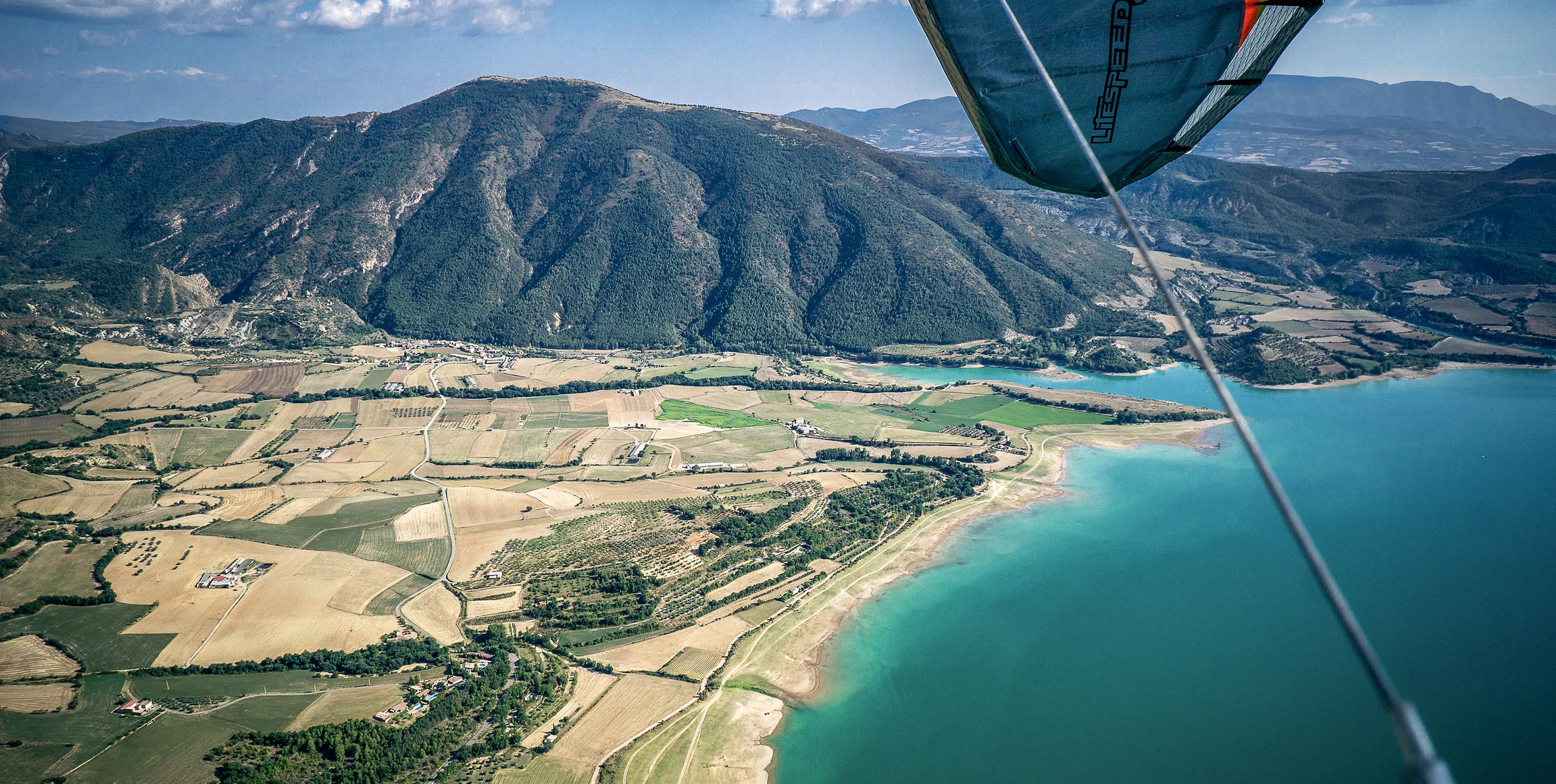
Guide to Combe Gibbet, England
7 February, 2014- Classic summer flatland flying across a green and pleasant land
- Fly the 100km classic route downwind to the coast
- Watch for airspace – it’s busy here
- April to September is best

WHY GO?
One of the best XC sites in the south of England and the launch-pad to numerous downwind adventures.
WHERE IS IT?
WHAT’S IT LIKE?
In Old English a gibbet is where they hang people, and indeed the old gallows still stand on top of this hillside, looking out across some of England’s finest agricultural land. Combe is the bucolic village nearby.
The gibbet, erected in 1676 and replaced many times since, was put there for a reason: you are on the highest point for miles around. The site is a perfect grassy slope 1km long and 95m high, facing N/NW.
On a good XC day thermals roll across the fields towards you, pulling you skywards and to base. From there the flatlands open up. With any wind it’s downwind towards the coast 80km away, on rarer nil-wind days it’s triangles out front.
The site can get crowded on flyable weekends and you need to watch the forecast. But get it right and flying here can be perfect.
[vimeo id=”46543145″ w=”602″]
FLYING CONDITIONS
The site is sensitive and you need to be a temporary club member – easily done through the Thames Valley Hang Gliding Club (TVHGC) website. Once signed-up you should look for post cold-frontal days with a north-westerly airflow.
The take-off area is huge, and toplanding and bottom-landing are both straightforward. Slope-landing too. Your biggest challenge will most likely be other people. When it’s light lots of pilots fly slowly and scratch close. If this is not your thing, get out there and get up, or stay out of it.
The classic route is downwind towards the south coast and the seaside city of Brighton, where if lucky you will meet seabreeze convergence, for a 100km+ day out.
You should not fly XC here without an up-to-date airmap: this is crowded airspace, with Heathrow international airport 70km to the east and military airspace close by. There is good XC-planning information on the TVHGC website.
WHEN TO GO
Spring and summer. The site is closed for shooting from 1 September to 2 February every year and must not be flown.
ALTITUDE
Take-off: 270m
Landing: 175m
Cloudbase: 1,000-1,500m
HANG GLIDER ACCESS
Yes, this is a classic hang gliding site with easy access, take-off and landing.
MUST BE FLOWN
Downwind XC is the game here. Dodging airspace and pushing on until you reach the south coast.
WATCH OUT FOR
The site is sensitive, as above, and you should read the site rules before flying here. On any good flyable day it will be busy. It can be rough once the wind goes east of north. It can get rotory near the trees at the west end of the site. Away from the hill airspace is an important issue here.
ACCOMMODATION
You can park a camper van on the road on the top, but otherwise wild camping is not available. Hungerford is the nearest small town, with B&Bs and hotels available there.
TAKE THE FAMILY & RAINY DAYS
The south of England is full of things to do, from busy market towns to country walks and historic houses. See local tourism websites www.visitwiltshire.co.uk and www.visit-hampshire.co.uk.
WEATHER INFORMATION
Check RASP, Britain’s excellent soaring forecast, for a detailed and accurate forecast. If it’s a five-star day, drop everything else and go.
GETTING THERE
The nearest airports are Heathrow or Gatwick, from where it is a one-hour or two-hour drive.
By train the nearest station is Hungerford, from where you can arrange a taxi to take you the 8km to the top of the hill. Taxi numbers: + 44 (0)1488 681 182 and +44 (0)1488 580 002. This is a good way to do it if you are planning to fly XC as you can then forget about the car and fly south; hitching and then finding another train station where you land.
USEFUL CONTACTS
Thames Valley Hang Gliding Club








